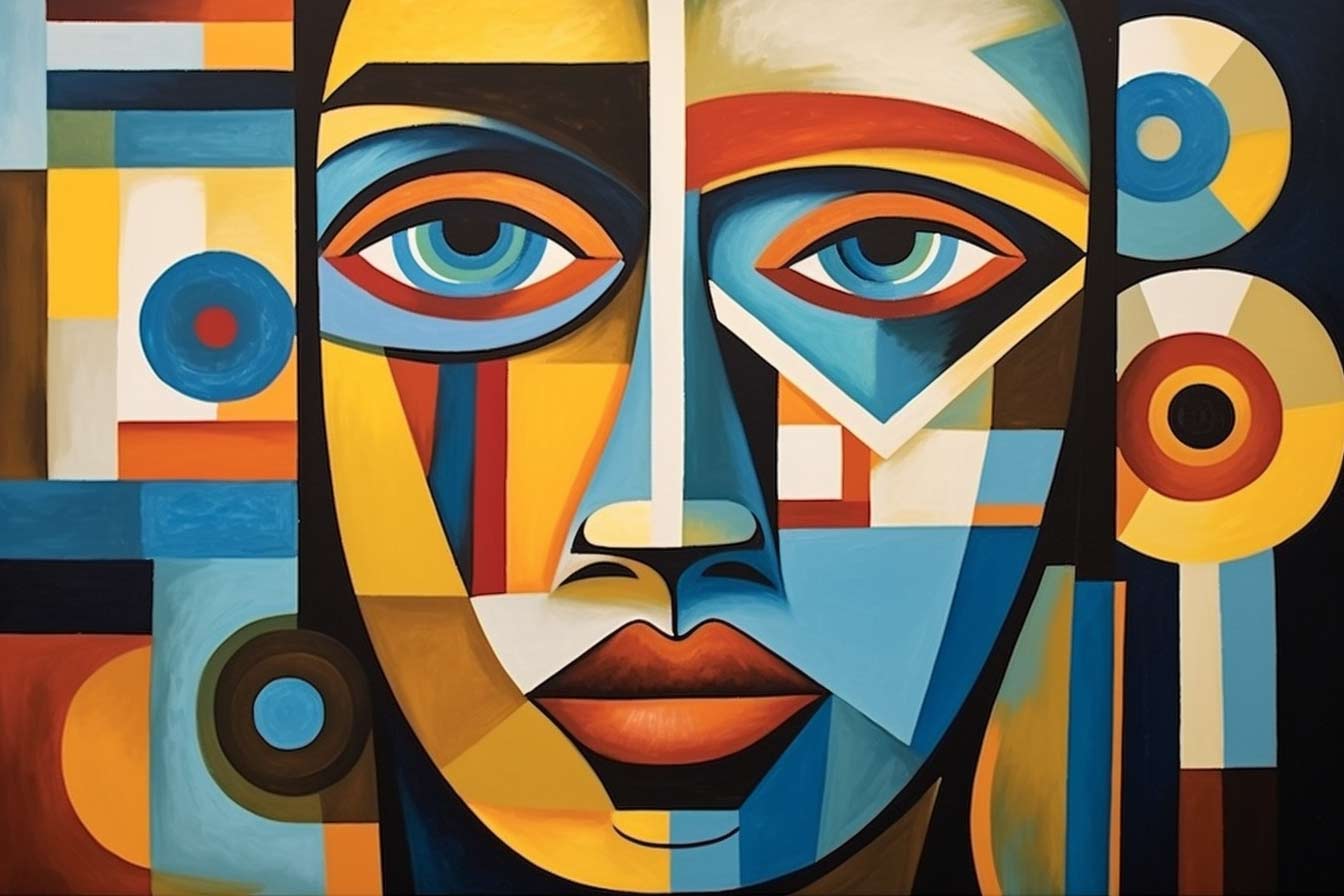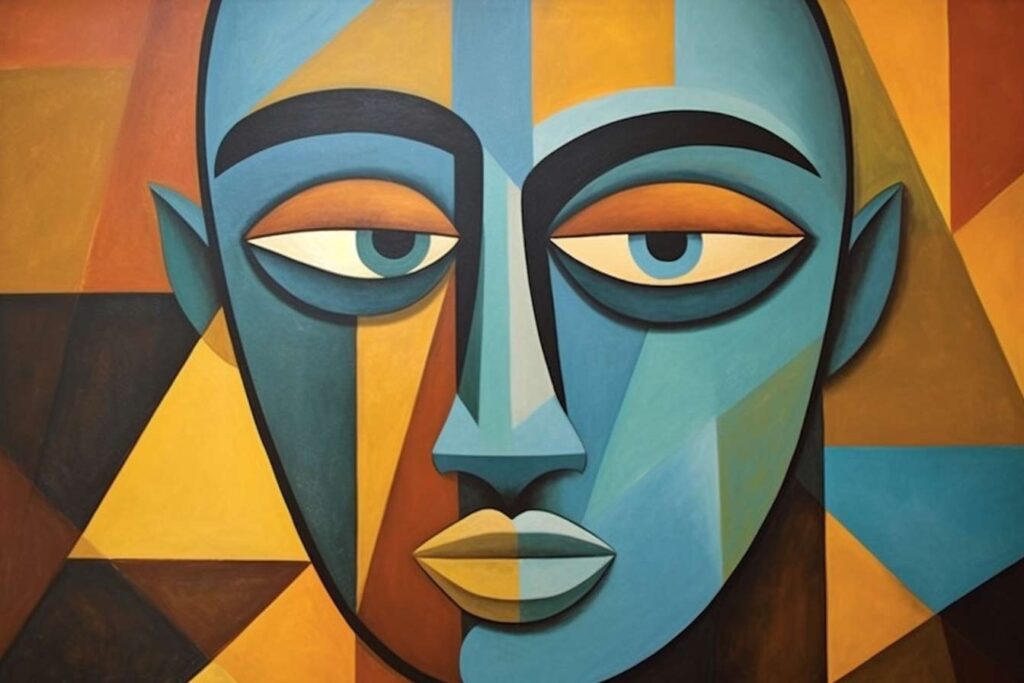Eclecticism and Geometry
Portrait in the Dawn of Cubism
The grandeur of art, in its myriad manifestations, has led humanity through aesthetic thresholds, always in search of forms that capture our essence and reflect our relationship with the world. In the lush branches of this artistic journey, the early 20th century offered us a revolution, one in which form and space challenged each other: Early Cubism and Proto-Cubism.
Cubism, with its bold reconfigurations of reality, challenged traditional perception and offered a new way to represent the world. Instead of presenting a single, monolithic perspective, Cubist images show multiple simultaneous viewpoints, broken down into basic geometric shapes like squares, triangles, and circles. But what if this innovation were applied to a portrait of a person?

When we embark on the challenge of creating a portrait using these basic geometric forms, we face not only a task of deconstruction but also of introspection and reimagining. This is where the influence of African art, particularly in masks and totems, becomes essential. These pieces, rich in history and symbolism, provide us with a palette of facial features that evoke deep emotions and an intrinsic connection with nature and the divine.
African masks, with their simplified contours and bold contrasts, seem, in many ways, to foreshadow the minimalism and abstraction of Cubism. Those broad foreheads, almond-shaped eyes, and pronounced lips easily translate into triangles, circles, and rectangles. By incorporating these elements into a Cubist portrait, we are not only merging two artistic styles but also honoring a heritage and bridging continents and eras.
It is interesting to reflect on how, by borrowing from African art, Cubism reflects a universality in art, a shared desire to understand and represent the human essence in its purest form. This eclecticism in portraiture, where basic shapes meet the rich traditions of African masks and totems, is a testament to the power of art to transcend boundaries and times, to find the universal in the particular.
Thus, in this act of artistic synthesis, we remember the fundamental truth that art, in its purest expressions, seeks to connect, celebrate, and understand the vastness and diversity of the human experience. In this crossroads of styles and cultures, we find a visual language that is both ancient and radically new, both intimate and universal.
